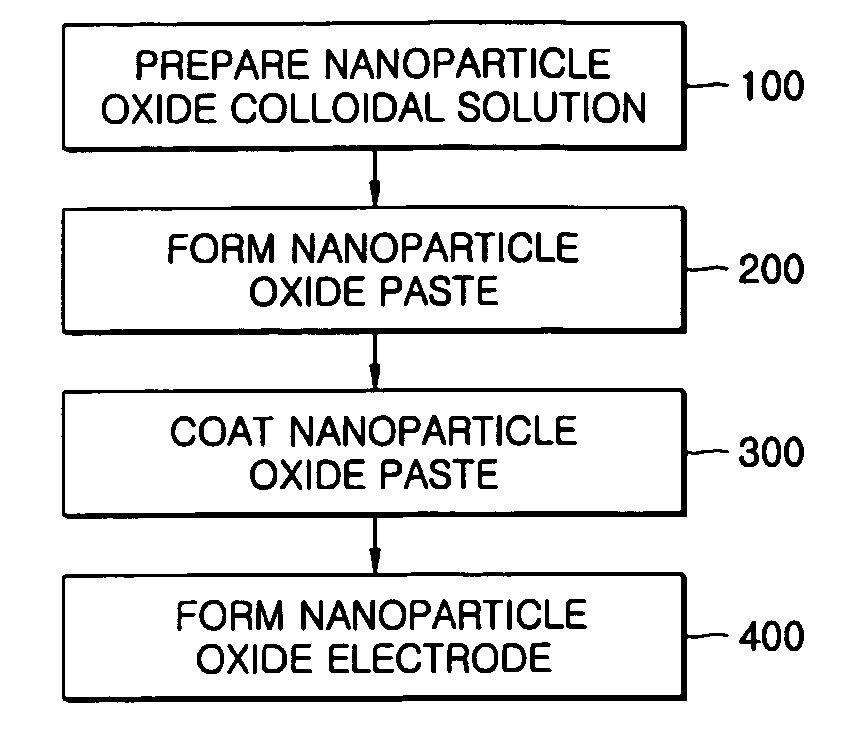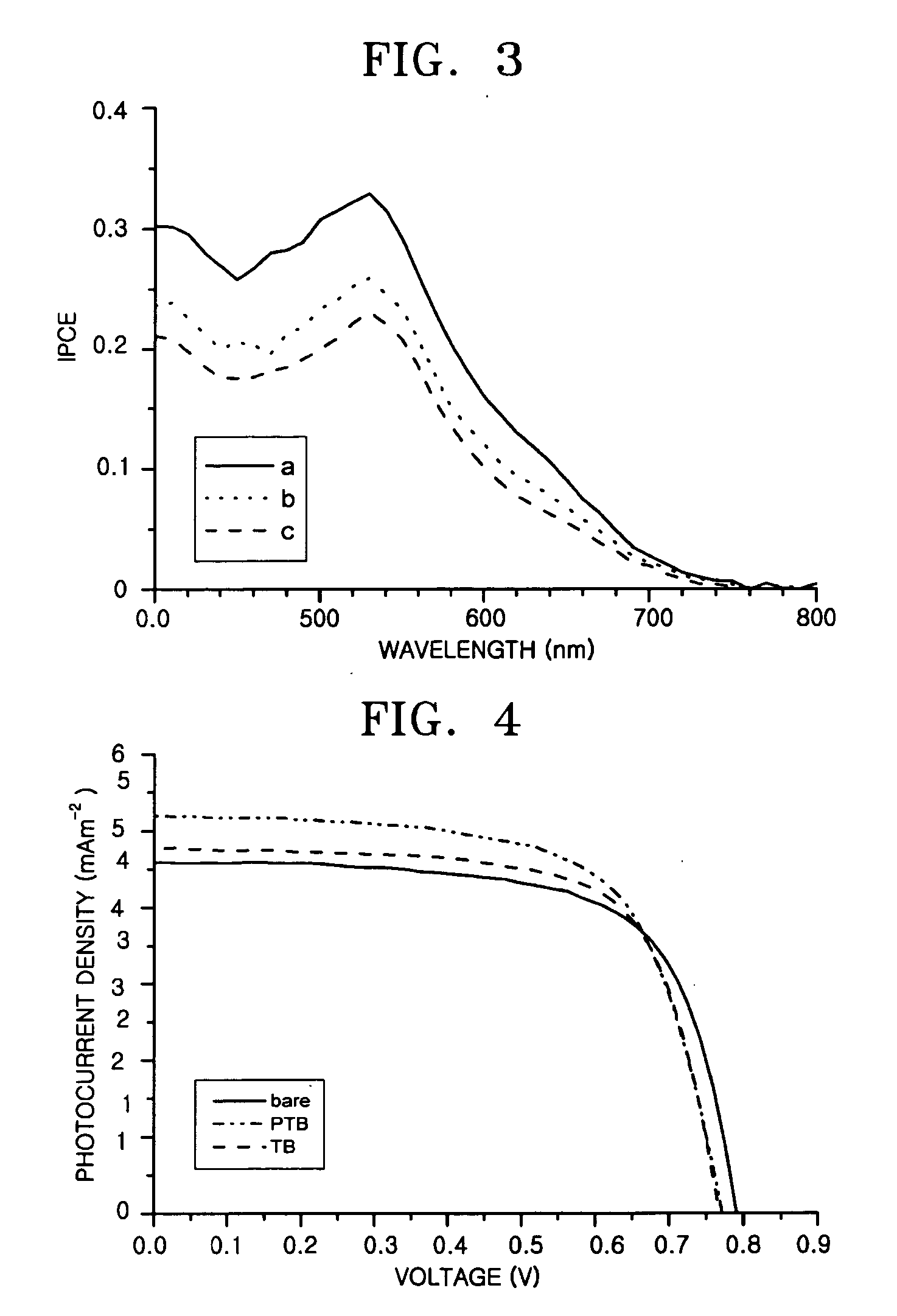Method of forming nanoparticle oxide electrode of plastic-type dye-sensitized solar cell using high viscosity nanoparticle oxide paste without binder
- Summary
- Abstract
- Description
- Claims
- Application Information
AI Technical Summary
Benefits of technology
Problems solved by technology
Method used
Image
Examples
experimental example 1
[0035] An example of a method for forming the nanoparticle oxide electrode of the dye-sensitized solar cell using the titanium oxide paste is described.
[0036] Titanium isopropoxide, acetic acid, isopropanol and water are reacted at a temperature of 230° C. for 12 hours to prepare the titanium oxide (TiO2) colloidal solution by a hydrothermal composite method.
[0037] A solvent is evaporated from the titanium oxide colloidal solution to obtain a colloidal solution with titanium oxide having a particle size of about 5 nm to 30 nm, until the concentration of titanium oxide is 5 wt % to 15 wt %, and preferably 12 wt % to 13 wt %, of the obtained titanium oxide colloidal solution. As described above, the titanium oxide contained in the titanium oxide colloidal solution is a nanoparticle oxide having good acidic dispersion.
[0038] After that, 1 to 10 moles of ammonia (NH3) aqueous solution are added and agitated with a magnetic stirrer in 10 g of the titanium oxide colloidal solution conc...
experimental example 2
[0040] An example of a method for forming the nanoparticle oxide electrode of the dye-sensitized solar cell by using the tin oxide paste is described.
[0041] A tin oxide colloidal solution is prepared in a hydrothermal composite method. A solvent is evaporated from the tin oxide colloidal solution to obtain a colloidal solution with tin oxide having a size of about 5 nm to 30 nm, until the concentration of the tin oxide is 5 wt % to 15 wt %, and preferably 12 wt % to 13 wt %, of the obtained tin oxide colloidal solution. As described above, the tin oxide contained in the tin oxide colloidal solution is a nanoparticle oxide having good basic dispersion.
[0042] After that, 1 to 10 moles of acetic acid (CH3COOH) aqueous solution are added and agitated with a magnetic stirrer in 10 g of the tin oxide colloidal solution concentrated to 12.5 wt %, so that the weight ratio of ammonium hydroxide (NH4OH) to tin oxide (SnO2) is 0.01 to 0.5 (that is, 0.014OH / SnO24OH / SnO2<0.1). As the acetic ac...
PUM
 Login to View More
Login to View More Abstract
Description
Claims
Application Information
 Login to View More
Login to View More - R&D
- Intellectual Property
- Life Sciences
- Materials
- Tech Scout
- Unparalleled Data Quality
- Higher Quality Content
- 60% Fewer Hallucinations
Browse by: Latest US Patents, China's latest patents, Technical Efficacy Thesaurus, Application Domain, Technology Topic, Popular Technical Reports.
© 2025 PatSnap. All rights reserved.Legal|Privacy policy|Modern Slavery Act Transparency Statement|Sitemap|About US| Contact US: help@patsnap.com



